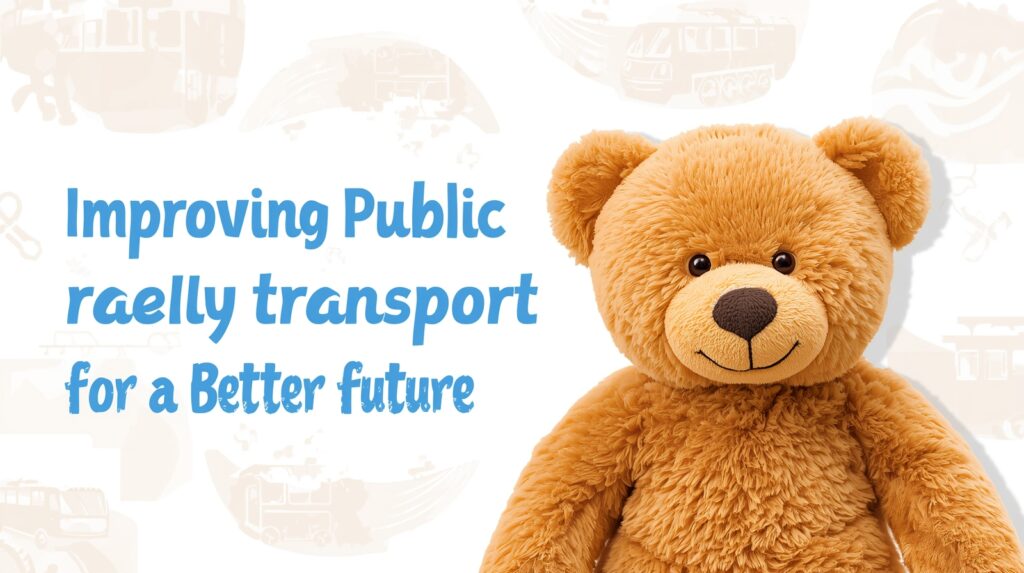Public transportation has long been the backbone of modern cities, defining how people live, work, and connect with each other. Because of increased urbanization, rising populations, and growing worries about climate change, governments and policymakers are paying more and more attention to public transport reforms. These changes aren’t just about making buses and trains better. They’re also about creating long-lasting, inexpensive, and accessible transportation systems that can help the economy and the environment in the long term.

Why Changes to Public Transportation Are Needed
1. Urbanization and Population Growth
Cities around the world are expanding at an unprecedented rate. According to the UN, by 2050, almost 70% of the world’s population will live in cities. Without strong public transport networks, cities will experience overwhelming traffic congestion, air pollution, and mobility disparity.
2. Climate Change and Sustainability
Transportation contributes for roughly 25% of worldwide CO2 emissions, and much of this originates from private automobiles. Reforms in public transport can considerably lower emissions by transferring people from cars to buses, trains, trams, and metro systems. Green initiatives, such as electric buses and solar-powered transit hubs, further connect with sustainability aims.
3. Accessibility and Social Inclusion
Public transport is a lifeline for millions of those who cannot afford private vehicles. Reforms that promote accessibility for low-income groups, women, the elderly, and people with disabilities help develop fairer and more inclusive cities.
Key Areas of Public Transport Reforms
1. Modernization of Infrastructure
Investments in metro rail, high-speed trains, bus rapid transit (BRT) systems, and dedicated cycling lanes are crucial. Many cities are building subterranean metros and updating bus fleets to satisfy increased demand.
2. Digital Transformation
Smart technologies are revolutionizing public transport. From contactless ticketing systems to real-time GPS tracking of buses and trains, digital innovations are making commuting more convenient. Mobile apps that show live schedules, seat availability, and route ideas increase user experience.
3. Electrification of Transport
One of the most impactful reforms is the shift to electric buses, trams, and trains. Countries like China and India are investing extensively on EV fleets to minimize pollution. European towns are likewise working toward zero-emission transport networks by 2035.
4. Integration of Transport Modes
A key reform trend is providing seamless connectivity between buses, trains, ferries, and even micro-mobility options like e-scooters. Integrated transit cards or mobile wallets make transferring between modes easier and encourage more people to utilize public networks.
5. Policy and Governance Reforms
Governments are introducing policies that emphasize public transport over private cars. For instance, congestion pricing, fuel charges, and car-free zones are methods that encourage people to utilize buses and trains instead of personal vehicles.

Global Examples of Public Transport Reforms
1. Europe: Pioneering Green Mobility
Cities like Amsterdam, Berlin, and Paris are leading in green public transport. Paris has extended bike-sharing networks and outlawed high-polluting automobiles in some zones, while Berlin merges buses, trams, and subway services into one inexpensive monthly pass.
2. Asia: Scaling Up Infrastructure
China has the world’s largest high-speed rail network and thousands of electric buses operating everyday. India is expanding metro systems in cities like Delhi, Mumbai, and Bengaluru, while also launching electric buses in numerous states.
3. North America: Smart and Inclusive Systems
In the US, cities like New York and Los Angeles are investing in new subway extensions and light rail projects. Canada’s Toronto Transit Commission (TTC) is focusing on digital solutions such as contactless payments and smartphone tickets.
4. Africa: Expanding Access
African cities, notably Nairobi and Lagos, are introducing Bus Rapid Transit systems to meet fast-growing populations. These measures aim to make travel inexpensive, accessible, and safer for millions of everyday commuters.
Benefits of Public Transport Reforms
1. Environmental Benefits
By reducing the number of cars on the road, reforms directly cut air pollution and greenhouse gas emissions. Electrified buses and trains significantly reduce dependency on fossil fuels.
2. Economic Growth
Efficient mobility boosts productivity by lowering trip time. It also produces jobs in construction, operations, and maintenance while boosting local businesses by enhancing accessibility.
3. Social Inclusion
Affordable and reliable public transport ensures that everyone, regardless of financial level, has equal access to education, healthcare, and job opportunities.
4. Reduced Congestion
Well-planned public transport networks decrease traffic bottlenecks, providing speedier commutes and less stress for daily travelers.
Challenges in Implementing Reforms
Despite the positives, public transit reforms confront challenges:
- High Costs: Building metros, electric fleets, and smart systems involves large financial investments. * Political Will: Reforms frequently entail long-term planning, which might clash with short-term political ambitions.
- Public Resistance: Some communities fight change due to fears about higher taxes, relocation, or new regulations. * Maintenance Issues: Infrastructure like roads, rails, and buses need continual care, which may be expensive and time-consuming.
The Future of Public Transport
Looking ahead, public transport changes will continue to evolve with technology, environmental goals, and urban planning initiatives. Key future trends include:
- Autonomous Vehicles: Self-driving buses and trains could revolutionize public transit by decreasing costs and enhancing safety.
- AI and Big Data: Data-driven systems will optimize routes, eliminate delays, and improve passenger experiences.
- Sustainable Fuels: Beyond electricity, hydrogen-powered buses and trains are emerging as eco-friendly options.
- Smart Cities Integration: Transport will be fully integrated with other urban systems like electricity grids, traffic signals, and digital payments.

Final Thoughts
Public transport changes are not just about boosting mobility—they are about altering societies. They produce greener, fairer, and more habitable cities while addressing major concerns like climate change, inequality, and congestion. Governments, corporations, and citizens must work together to support these reforms, as the advantages reach well beyond transportation.
The future of urban living hinges on how well we design and implement public transport reforms today. Investing in cleaner, smarter, and more inclusive systems ensures that cities remain sustainable and accessible for years to come.



